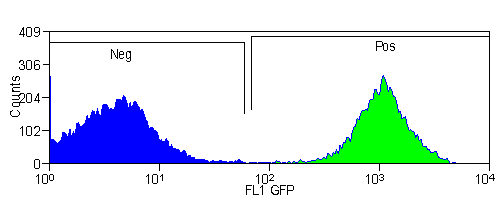Introduction to Flow Cytometry
Flow Cytometry
Flow cytometry is the characterization of single cells as a fluid stream of cells is passed through a laser beam at high speed (thousands of cells/second). Flow cytometry uses a laser-based instrument to analyze and sort cells or particles based on their light scattering properties and their pattern of fluorescence emission. Not only is the analysis fast, it yields information that is unattainable by other methods. As each cell flows past a focused laser beam (or beams) of appropriate wavelength(s), light is scattered and detected in both the forward and side (90 degree) parameters. If the cell contains any molecules that fluoresce from the wavelength of the laser light, fluorescence is emitted; this allows looking at the cells with the property associated with that particular fluorescence. This information is used to determine the characteristics of those cells. Flow cytometry provides data on large numbers of individual cells, and is very fast- thousands of cells per second can be analyzed and/or sorted (purified). The information gathered from each cell is stored. To allow for multiple different biological or biochemical properties of the cells to be determined at one time, the cells can be stained with different fluorescent dyes which bind specifically to the cellular component of interest. Forward scatter gives an indication of a cell’s relative size and side scatter an indication of its texture (granularity). Fluorescence depends on the binding of the different fluorescent dyes for the property of interest.


